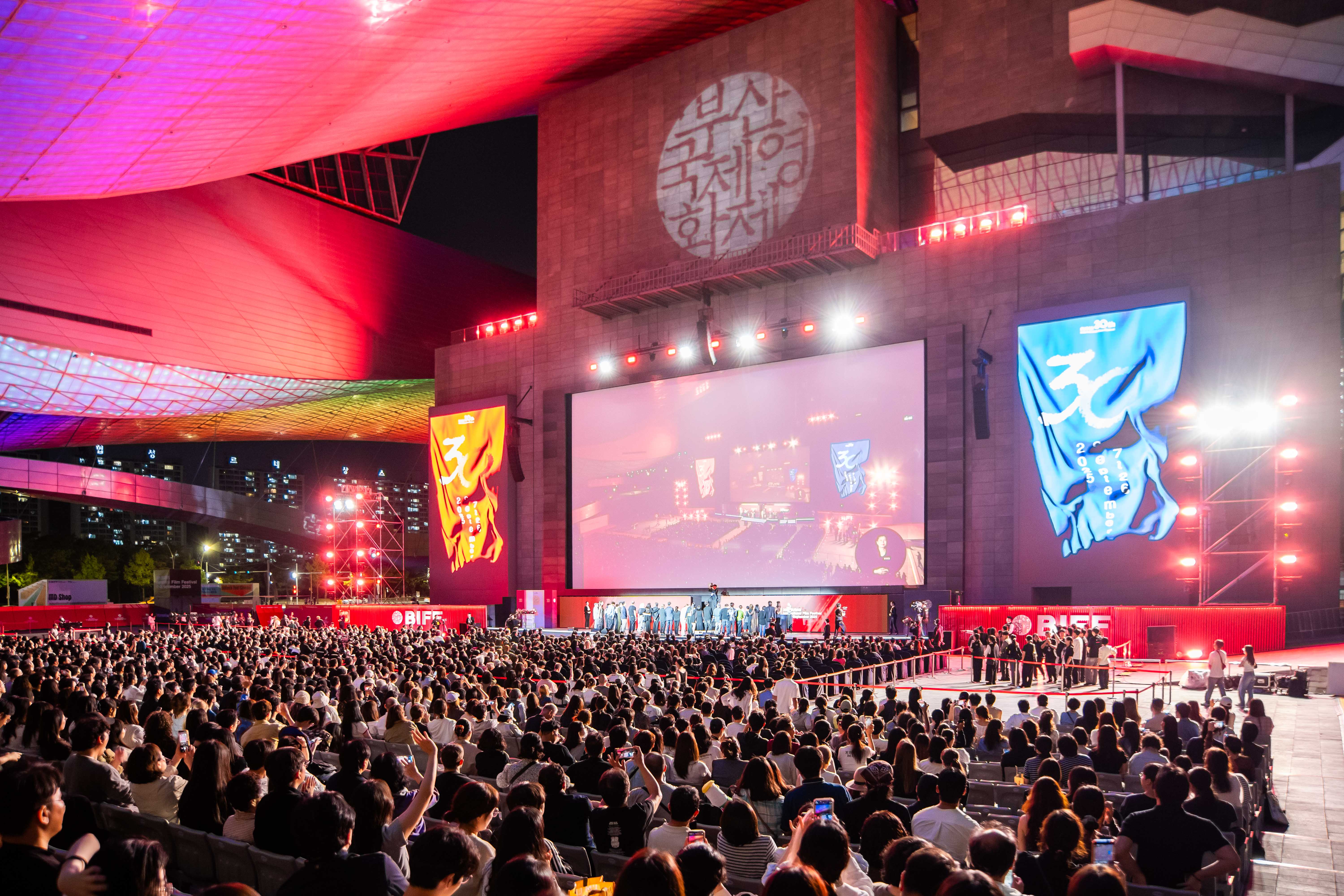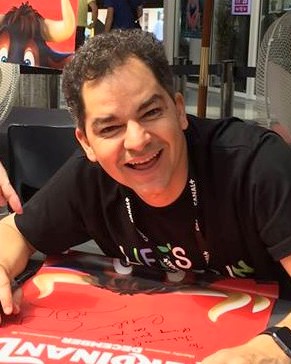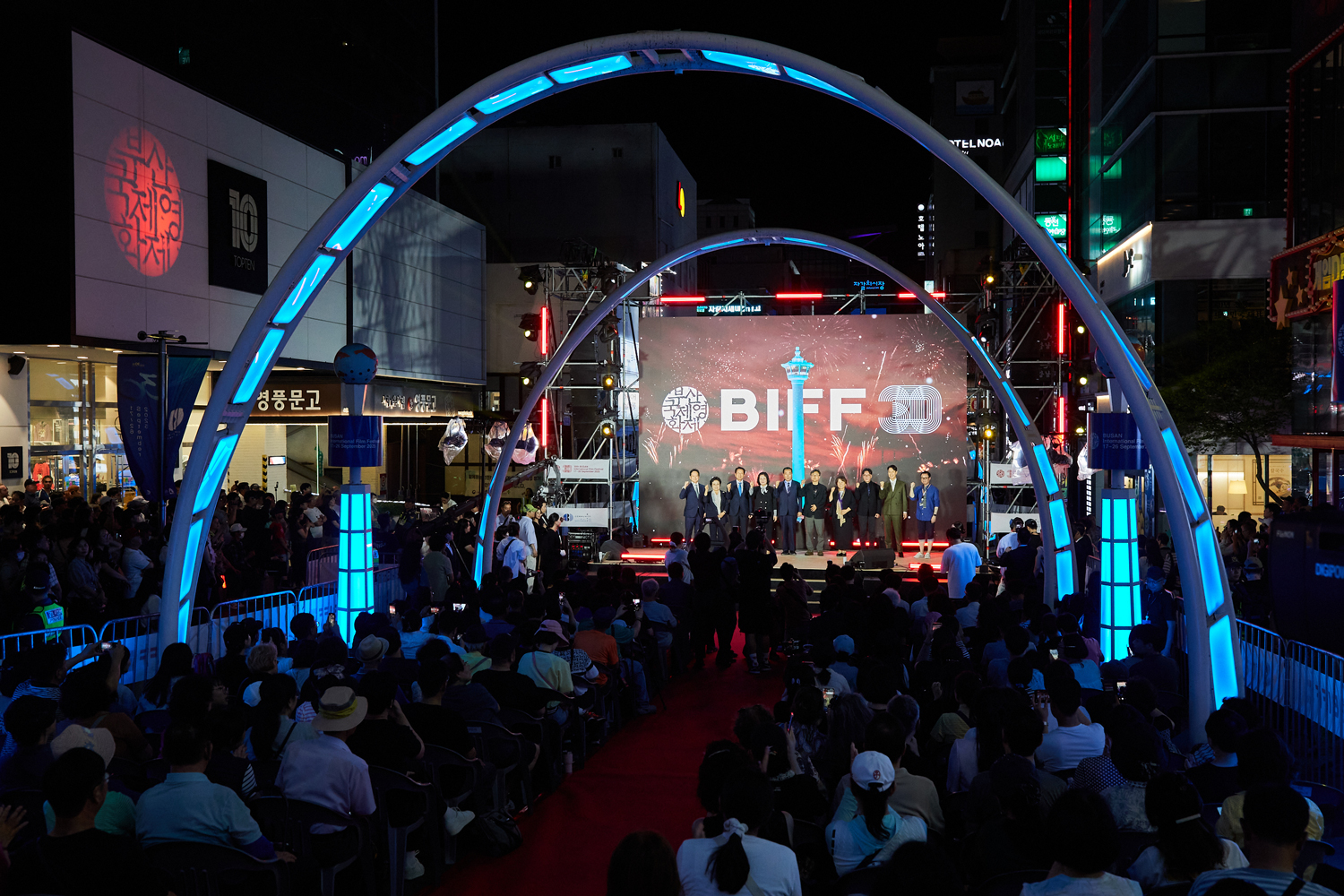Carlos Saldanha on AI at Busan: Cautious Optimism

Busan Cinema Center | Photo by Wikimedia Commons (CC BY-SA 3.0)
Share this post:
Carlos Saldanha on AI at Busan Film Festival: Cautious Optimism from the Ice Age Director
Carlos Saldanha knows something about technological transitions in filmmaking. The Brazilian director was among the first generation of animators to adapt CGI techniques at Blue Sky Studios, creating hits like Ice Age: The Meltdown, Rio, and the Oscar nominated Ferdinand. Now he's watching another technological shift, and his approach is measured.
Speaking at the 30th Busan International Film Festival in September 2025, Saldanha addressed AI's growing influence during the Motion Picture Association's "AI in Filmmaking Seminar." His message was clear: the technology has potential, but he's using it carefully.
"AI for me is a novelty. I'm starting gradually," Saldanha said. "I am highly interested, and as I engage with directors and creators who extensively utilize AI, I am fascinated by how it can be leveraged as a powerful tool for enhancing work, improving efficiency, and addressing the constant constraints of time, budget, and resources, which are often bottlenecks in the creative process."
Then came the qualifier. "But I only use AI processes very cautiously and when I truly need to find a solution that I currently don't possess."

The Context: Busan Film Festival and Asia's AI Conversation
Busan International Film Festival has spent 30 years tracking developments across Asian cinema and beyond. The 2025 edition, held September 17 to 26, featured AI prominently in conversations among filmmakers, producers, and industry professionals.
AI is a hot topic across Asia. Work continues on establishing best practices for the technology, particularly around intellectual property protection and safeguarding rights of creative workers. The MPA seminar brought together four industry representatives to discuss implementing AI, potential uses, and areas of opportunity and concern.
Urmila Venugopalan, the MPA's president and managing director for the Asia Pacific region, framed the conversation in her opening remarks. "At the MPA, we believe deeply in encouraging constructive, thoughtful conversations around new technologies and how they intersect with the art and business of storytelling," she said. "We believe AI, used responsibly, can enrich audience experiences and open new frontiers for storytelling."
Sohee Kim, a senior Bloomberg reporter covering Asia's entertainment industry, moderated the panel discussion.
Saldanha's Practical View on AI Tools
Saldanha's interest centers on specific production problems AI might solve. He's not looking at the technology as a creative replacement but as a tool for addressing practical bottlenecks.
"I believe that [AI] could save time for me personally in terms of preparing and previsualization shots, and getting ready for a shot," he explained. The previsualization phase in animation is where directors test camera angles, compositions, and scene flow before committing resources to full production.
Current limitations temper his enthusiasm. "It hasn't solved some problems yet, as I still have resolution issues, including in terms of quality and consistency, but I believe it is only a matter of time."
This matches what other animation professionals report. The technology works for rough exploration but often needs refinement for final quality. Resolution, consistency across frames, and maintaining specific stylistic choices remain challenging.
Saldanha's approach reflects his background. He came to New York as a film student and discovered "rooms full of computers" that could "be used to make art." His graduation short "Time for Love" led to work at Blue Sky Studios, where he was on the vanguard of CGI animation technology. He understands that new tools require learning their capabilities and limitations through direct experience.
Other Voices at the Seminar
The panel included three other perspectives from different parts of the production ecosystem.
Antonia Kim: The AI Native Filmmaker
Korean director Antonia Kim represents the other end of the adoption spectrum. As founder and CEO of Seoul based independent production company Aitonia, she's built her workflow around AI from the start.
"It seems that the more I worked with many people, the lonelier I felt," Kim said. "When it comes to work, there is a very clear vision in my head, so it's really difficult for me to compromise. So in the midst of all that, now AI appeared, and the biggest change for me now is that I think I am forming a multiverse with AI."
Kim creates using what she calls "a proprietary optimized chatbot and a team of thirteen 'AI employees' with specialized creative roles." Her recent work includes the award winning shorts CHOON and The Day I Saved a Fish.
"I am truly doing everything freely without any borders," she explained. "So, I think AI is a framework that really breaks stereotypes."
Kim's perspective shows how some filmmakers see AI not as a supplement to traditional workflows but as an entirely different production model. Whether this approach scales beyond short films remains to be seen.
Daniel Son: VFX Industry Expansion
Daniel Son founded Westworld Co., Ltd, a Seoul based VFX studio. His credits include the horror hit Exhuma (Best Visual Effects winner at the 18th Asian Film Awards) and the war epic Ode to My Father.
Son explained how AI enabled his company to expand while freeing employees from repetitive work. "Ultimately, the market can become bigger through AI, so we have no choice but to work through AI, and we are continuously preparing for this," he said.
His observation extends beyond VFX. "This is not just about VFX, but also clearly being gradually integrated in various fields of production environments, so when it all comes together, I think that soon staff everywhere will be using AI."
This gradual integration across departments matters. When AI affects only one part of production, workflows remain mostly traditional. When it affects multiple stages simultaneously, the entire production process changes.
Jae Huun Ahn: The Challenge of Maintaining Uniqueness
Jae Huun Ahn directs Studio Meditation with a Pencil, an animation studio behind The Shaman Sorceress and the upcoming Gill. His concern focused on preserving artistic identity while using AI tools.
"It seems like a very challenging task to utilize AI without losing uniqueness and independence," Ahn said. "How can one use this tool in animation while still being able to achieve those aspects that are touched by human hands in the end?"
He's been thinking about these concerns while seeing positive results. Generative AI has already changed his studio's output. "In the past, when watching animation, you could see Hollywood style character expressions and Japanese expressions," he explained. "Our studio has often pondered what such a Korean form might be like. Interestingly, through AI, it seems that we now have many tools to expand on those aspects a bit more."
The ability to develop culturally specific visual language through AI is an interesting outcome. Rather than homogenizing style, the tools might enable exploration of distinctive aesthetics that would be too time consuming or expensive to develop traditionally.

The IP Protection Question
The conversation turned to intellectual property concerns, which remain unresolved across the industry. Saldanha articulated the core problem.
"Big projects, big studios, have legal issues concerning whether what you have created is performing someone else's work, and how that question [of ownership] exists in people's minds," he said. "How to make what you use safe, how to perform with it are always going to present big questions."
These aren't abstract concerns. Studios investing millions in productions need clarity about ownership, copyright, and liability. If an AI tool generates something that resembles copyrighted material, who is responsible? If the AI training data included copyrighted works, does that create obligations to original creators?
The legal framework hasn't caught up with the technology. Different jurisdictions are developing different approaches. For filmmakers working on international co-productions or planning global releases, this creates uncertainty.
Human Direction Remains Central
Despite Antonia Kim's "AI employees," she was clear about hierarchy. "AI itself won't create anything because it will always be humans as masters driving it, leading to very new forms of companies that we have never heard of, and new forms of art, and new forms of stories emerging."
This echoes Saldanha's cautious approach. The tools don't replace creative decisions. They assist with execution, potentially speed up workflows, and might enable options that weren't previously feasible. But the artistic vision, emotional core, and narrative choices remain human responsibilities.
Moderator Sohee Kim posed a relevant question: how would creators ensure AI content wouldn't be easily identified as AI produced work? The ability to spot AI generation often signals quality issues or stylistic tells that viewers find off putting.
Jae Huun Ahn's response focused on process. "By eliminating some of the processes in the earlier planning stages and at the end handing it over to people, can animation provide efficiency in certain tasks and also still offer the charm that people can provide?"
The workflow he describes uses AI for initial stages, then human artists refine and finish. This keeps human touch in the final product while gaining efficiency in development phases.
Saldanha's Career: From Student to Animation Legend
Understanding Saldanha's perspective requires context about his career path. He spoke to the 24 emerging filmmakers gathered for the CHANEL X BIFF Asian Film Academy about his journey from film student to animation director.
"Every minute counts on the journey towards your objective," was his chief advice. He arrived in New York as a student and discovered computers could be used to make art. His graduation short "Time for Love" gained attention and led to work at Blue Sky Studios during the early days of CGI animation.
The hits came: Ice Age: The Meltdown (2006), Rio (2011), Ferdinand (2017). He expanded from animation to live action, working on TV series for Netflix (Invisible City, 2021) and Hulu (How to be a Carioca, 2023). His next project is 100 Days, a Disney biopic about Brazilian explorer Amyr Klink, set for release in late 2026.
"What inspires me? Good stories with good emotional heart moments," Saldanha explained. "Every time I think about a story, the first thing that I do is I think about the heart of the story. And then from that point on, I think about the fun, the comedy, and all the other things that come together with that. But if the story doesn't have that pulsing little beat there, I'm not interested."
This focus on emotional core influences how he views AI tools. They might help with technical execution, but they don't generate the emotional truth that makes stories work. That requires human experience and creative judgment.
Practical Advice for Emerging Filmmakers
Saldanha shared specific advice about pitching, production, and career development that applies whether using AI or traditional methods.
On pitching: "When I go to pitch, I start by presenting why I want to do this project and what inspired me about it. Your passion for your project is very important, and it's contagious. You have to pass it on because they have to be as passionate about the project as you are."
He emphasized being truthful and coming from the heart. Technical details about execution come later. The initial pitch needs to communicate why the project matters and what makes it compelling.
On collaboration: "Especially in animation, I see myself more like a cheerleader than a leader. You can never do these projects by yourself. I think your job is to make sure that you're always surrounded by people who want to make the best project."
He stressed listening over talking. "Even as a director, even though I have to give directions, that's the role, most of the time, I'm quiet, I'm listening, I'm seeing what people are feeling, and I'm trying to hear what they have to say."
This collaborative approach matters when considering AI tools. They become part of the team's toolkit, not a replacement for human collaboration and creative exchange.
What AI Changes and What It Doesn't
The Busan seminar highlighted a consistent pattern across different perspectives. AI tools are changing production workflows, particularly in areas involving repetitive tasks, technical execution, and initial exploration.
What AI helps with:
- Previsualization and shot planning
- Initial VFX work and compositing drafts
- Exploring multiple visual options quickly
- Reducing time on technical preparation
- Expanding production capacity without proportional staff increases
What remains human territory:
- Emotional core and story heart
- Creative vision and artistic direction
- Cultural specificity and unique voice
- Final quality control and refinement
- Collaboration and team leadership
The technology is improving rapidly. Resolution and consistency issues that Saldanha mentioned will likely diminish over time. But the fundamental division between technical execution and creative judgment seems likely to persist.
The Asian Film Industry Context
Busan Film Festival's focus on AI reflects broader trends across Asian film industries. Countries throughout the region are exploring how AI fits into their production ecosystems, with varying levels of enthusiasm and concern.
Korea's film industry has been particularly active in AI adoption, with studios like Daniel Son's Westworld investing in the technology and independent filmmakers like Antonia Kim building entire workflows around it.
The diverse approaches on display at the seminar show there's no single path forward. Saldanha's cautious exploration, Kim's AI native production model, Son's gradual integration, and Ahn's focus on maintaining uniqueness all represent valid responses to the same technological moment.
The question is which approaches produce sustainable careers, quality films, and healthy industry ecosystems. The answer will likely vary by genre, budget level, and cultural context.

Looking Ahead
Saldanha's measured approach offers a useful model for filmmakers considering AI adoption. Start gradually, focus on specific problems the technology can solve, maintain caution about limitations, and keep the emotional core of storytelling as the priority.
His background navigating the CGI revolution in animation provides perspective. New tools create opportunities but don't eliminate the need for craft, collaboration, and creative vision. The animators who succeeded with CGI were those who understood both the technology's capabilities and storytelling fundamentals.
The same pattern likely applies to AI. Filmmakers who combine technical understanding with strong storytelling instincts will find productive ways to use these tools. Those who rely on AI to compensate for weak stories or unclear vision will produce forgettable work regardless of technical sophistication.
The conversation at Busan was notable for its nuance. None of the panelists dismissed AI outright or embraced it without reservation. They're all working professionals trying to figure out how these tools fit into their craft while preserving what makes their work distinctive and meaningful.
As Saldanha noted, the resolution and consistency issues are likely temporary. The harder questions about intellectual property, creative ownership, and maintaining human connection in storytelling will persist longer. Those are the conversations the industry needs to continue having as the technology evolves.
Key Takeaways from Busan
Carlos Saldanha approaches AI cautiously, using it only when he needs solutions he can't find through traditional methods. He sees potential for previsualization and shot preparation but notes current quality and consistency limitations.
The Motion Picture Association's Busan seminar featured diverse perspectives, from Antonia Kim's AI native production model to Jae Huun Ahn's focus on maintaining cultural uniqueness.
Intellectual property concerns remain unresolved. Questions about ownership, copyright, and liability create uncertainty for studios investing in productions using AI tools.
All panelists agreed that human direction remains central. AI assists with execution but doesn't replace creative vision, emotional truth, or artistic judgment.
Saldanha's background navigating CGI adoption in animation provides relevant perspective. New tools create opportunities but don't eliminate the need for craft, collaboration, and strong storytelling.
The Asian film industry is exploring AI adoption actively, with Korea showing particularly high engagement through studios and independent filmmakers building workflows around these tools.
Sources and Additional Reading
Motion Picture Association: From Ice Age to AI: Filmmakers at Busan Weigh Opportunities and Concerns
Busan International Film Festival Official Site
Hollywood Reporter: Busan Film Festival 2025 Takeaways
Wikipedia: Busan International Film Festival



